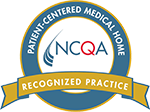Common Breastfeeding Challenges and How to Overcome Them
Breastfeeding is a special time for bonding and nurturing that moms should embrace if possible. It is also a time for learning as each child nurses differently and can pose different challenges. Here are some of the most common breastfeeding challenges moms face and how to overcome them.
Poor latching – Latching refers to the way your baby takes the nipple and areola into their mouth to nurse. When a baby is not latching correctly, she will not get enough milk and the amount produced will be insufficient for proper nourishment. A good latch consists of your baby taking both the nipple and areola into her mouth. To help your baby achieve this, compress your breast by placing your thumb above your nipple and areola. Bring your baby to your breast and stroke her cheek to start their rooting reflex. A proper latch should have your baby’s chin and top of her nose touching your breast with her lips flanged out (like a fish). Your baby’s mouth should cover as much of the areola as possible.
Engorgement – Painful swelling of the breasts is normal the first few days postpartum when your milk is coming in. It typically subsides in a day or two when your breasts adjust to make the right amount of milk for your baby. To prevent discomfort, begin breastfeeding as soon as possible after birth. This allows you and your baby to become proficient at breastfeeding before your milk comes in 2-3 days postpartum. Allow your baby to nurse whenever they want.
-
-
If breasts are tender, moist heat can be helpful before breastfeeding. Take a quick hot shower (less than 5 minutes) to help your milk begin to flow.
-
Apply cold compresses for ten minutes after nursing to reduce swelling.
-
Gently massage the breast while nursing to help improve milk flow and reduce engorgement.
-
Low milk supply – Breastmilk is produced as demanded by your baby. However, sometimes production wanes, which raises concerns for mom. To help overcome low milk supply, drink plenty of water, nurse often and if you cannot nurse, pump to keep your milk production up. Talk to your pediatrician to ensure your baby is eating enough.
Sore/cracked nipples – Sore or cracked nipples can make breastfeeding quite uncomfortable. Sore nipples can often be attributed to a poor latch. Other causes can include a yeast infection on the nipple, tongue-tie (which should be diagnosed by a pediatrician), flat nipples (a nipple shield can help) and using a pump with too much pressure. To help alleviate pain, vary nursing positions to change the position of your baby’s mouth on the breast. Express a little breastmilk and rub it on the nipples after nursing. The antibacterial properties can reduce skin irritation. You can also apply a pea-sized portion of ultrapure modified lanolin to the nipple and areola. This does not need to be removed before feedings.
Your pediatric team is here to help you have breastfeeding success. If you are struggling in any way, don’t wait for your breastfeeding challenges to become a bigger problem, schedule an appointment right away with your child’s pediatrician.
More breastfeeding challenges tips for addressing breastfeeding pain and can be found here.







